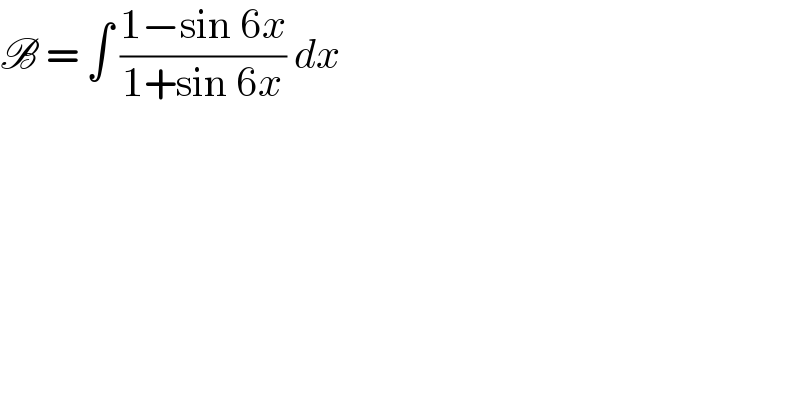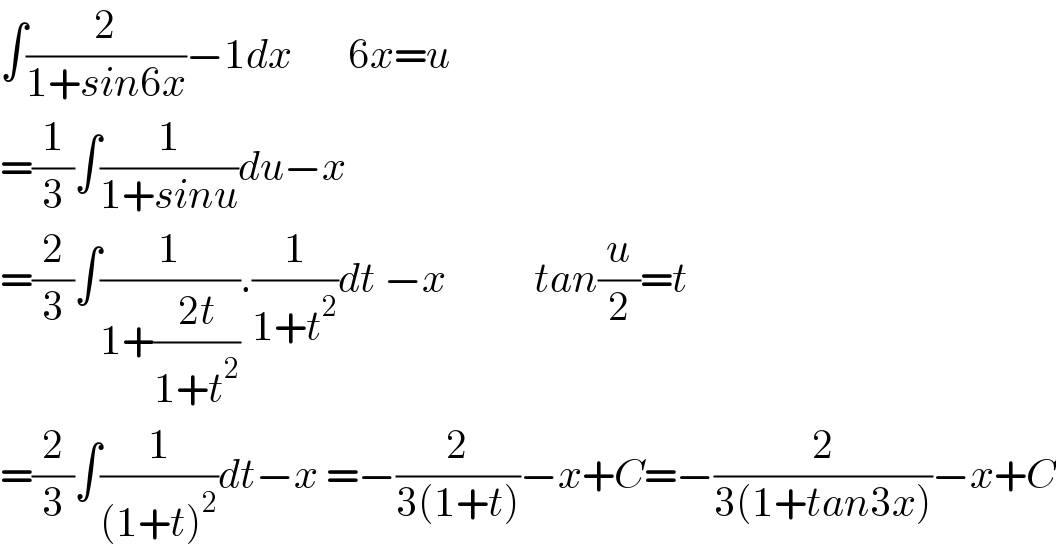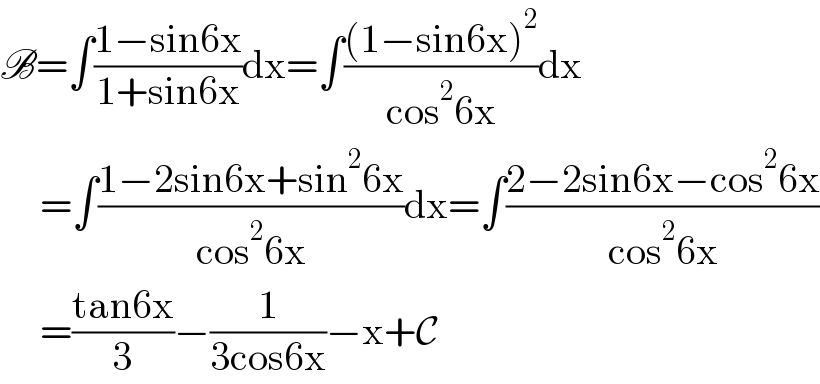
Question and Answers Forum
Question Number 134641 by benjo_mathlover last updated on 06/Mar/21

Answered by Dwaipayan Shikari last updated on 06/Mar/21

Answered by Olaf last updated on 06/Mar/21

Answered by EDWIN88 last updated on 06/Mar/21
![B =∫ ((1−sin 6x)/(1+sin 6x)) dx = ∫ tan^2 ((π/4)−3x)dx B = ∫ [sec^2 ((π/4)−3x)−1] dx B = −(1/3)tan ((π/4)−3x)−x + c](Q134658.png)
Answered by Ar Brandon last updated on 06/Mar/21

